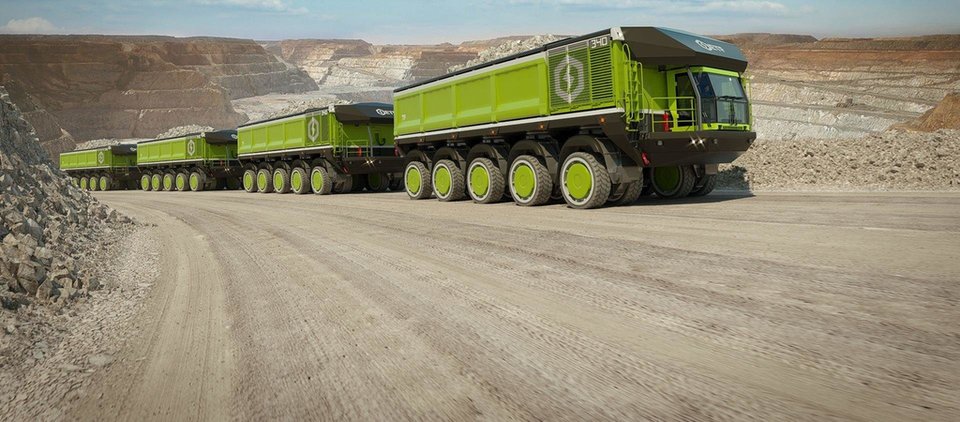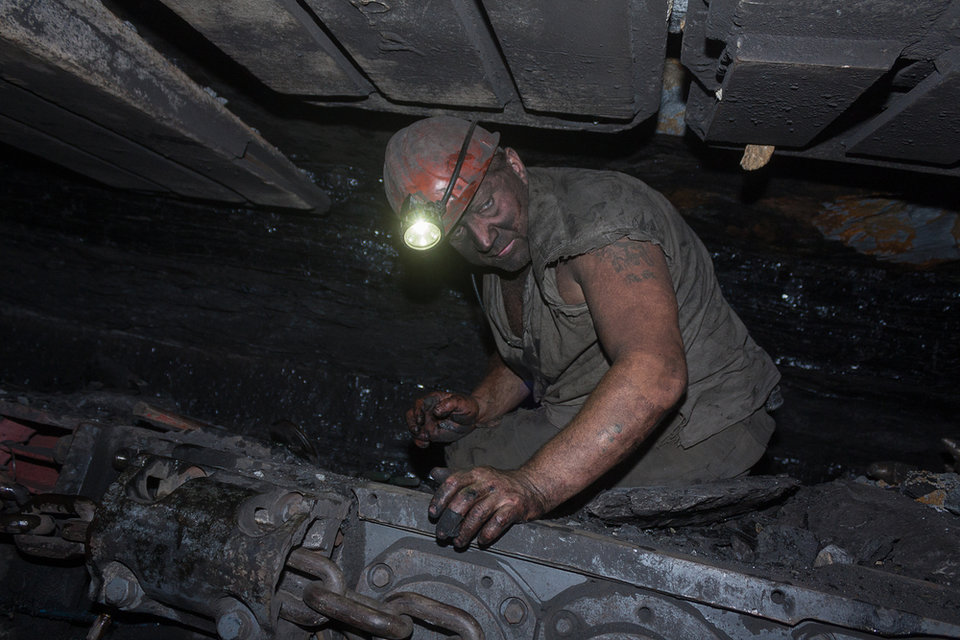Autonomous mining: the challenges of independently minded vehicles
Transport and haulage remain the most dangerous jobs in mining, with most accidents occurring when humans work with vehicles. With opportunities for driverless vehicles on the rise, truck manufacturer ETF is optimistic about the future of automation, as JP Casey finds out
Scroll down to read the article
As government regulations tighten up and safety equipment becomes more ubiquitous, mine safety has improved over time, particularly in the US. The Department of Labor’s Mine Safety and Health Administration (MSHA), which reports all mining accidents in the country, counted 100 fatalities at operations in 1995, compared to just 28 in 2017. There have been 19 in the first ten and a half months of 2018, putting this year on pace to be the least fatal in US mining history.
However, while mining safety as a whole has improved, a 2016 paper by Missouri University of Science and Technology researchers Saeid R. Dindarloo and Elnaz Siami-Irdemoosa, alongside Jonisha P. Pollard of the Pittsburgh branch of the National Institute for Occupational Safety and Health (NIOSH), demonstrated that the interaction between human workers and vehicles still poses a considerable safety threat.
The paper, titled ‘Off-road truck-related accidents in US mines’, found that there were 86 fatalities in accidents involving trucks recorded between 2000 and 2012, 11% of the total number of fatalities recorded by the MSHA over the period. The authors also found that 57% of all severe injuries during the period took place when a worker was operating a truck, with a further 27% when a worker was conducting repairs or maintenance of a machine.
A second study, published in 2012, reported a similar trend. ‘Patterns in Mining Haul Truck Accidents’, by Colin G. Drury of Applied Ergonomics and William L. Porter and Patrick G. Dempsey, both of the NIOSH, reported 133 fatalities due to what the authors called “haul truck-related fatal accidents” in the US between 1995 and 2010.
Dindarloo, Siami-Irdemoosa and Pollard also reported that more than two-thirds of victims involved in accidents at processing mills and coal plants had less than five years of job experience, suggesting that the individuals tasked with conducting work in these dangerous environments were also inexperienced, lacking in the practical knowledge of how to conduct their work safely.
Based on these figures, mining vehicles pose a considerable and consistent threat to safety in a sector that has otherwise improved consistently for more than 20 years. And, if inexperienced or unskilled human operators are a contributing factor to the risks, there is potential for autonomous vehicles to eliminate the sector’s reliance on human-vehicle interaction.
The challenges of autonomous vehicles
Several companies have sought to capitalise on this opportunity; both Volvo and Sandvik have unveiled autonomous mining vehicles in recent years. Volvo tested an autonomous truck at the Kristineberg mine in Sweden in 2016, where it covered 7km without a human driver over 1.3km below ground, while Sandvik tested the precision of an autonomous 38-tonne loader by challenging it to manoeuvre through a glass maze earlier this year.
Yet these vehicles have been used to demonstrate the effectiveness of autonomous technology, rather than be deployed in actual mining operations, and obstacles to the widespread integration of automation at mine sites remain.
Geoffrey Ejzenberg, chief client officer at Slovenian electric mining truck company ETF, believes that technological limitations are some of the most significant.
“Improving the technology is probably the most important one and that is exactly what ETF has focused on,” he says. “The autonomous systems in time will become a feature similar to climate control in cars. You have standard climate control systems and premium ones that have additional useful features.”
“But only a complete redesign of the haul vehicle as ETF has done, integrating cyber and physical design, completely digital and electrified, futureproofs the development of haul vehicles.”
Ejzenberg adds that the technology will not become more widespread until it becomes cheaper and more accessible.
“Vehicle pricing is an important challenge, specifically from a pre-operational cash outlay perspective and the economic viability of new projects,” he says.
Consultancy firm McKinsey & Company announced that they expect fully autonomous 250-tonne haulage vehicles to be priced at around $6m, a price which is not an obstacle to companies such as BHP and Rio Tinto, which boast market capitalisations in the hundreds of billions of dollars, but could dissuade smaller companies.
Barrick Gold, the tenth-largest mining company in the world by market capitalisation, according to Statista, has a capitalisation of $15.44bn. This is by no means a small figure, but the company maintains 12 operations across five continents, and supplying all of them with autonomous vehicles would be a considerable hurdle. The task is made even more daunting by the fact that autonomous technology is simply a part of a larger vehicle, so this technology is an expensive addition to a global supply chain that is already costly and complex.
McKinsey & Company announced that they expect fully autonomous 250-tonne haulage vehicles to be priced at around $6m

ETF's battery-electric haul train.
Credit: ETF
Automation is the future of mining for all the best reasons, including motivating the next generations to be miners
The future of autonomous vehicles
However, self-driving vehicles offer considerable safety benefits, not least by removing human workers from large vehicles, and Ejzenberg thinks these positives will ultimately lead to the widespread adoption of autonomous vehicles.
“Automation is the future of mining for all the best reasons, including motivating the next generations to be miners,” he says. “The mine of the future will be a whole new thing. One where we will move less dirt, get to the valuables more quickly, and retrieve those at the lowest cost per ton of ore produced.”
Some of the world’s largest miners are committing to autonomous projects to improve safety and productivity. Australian gold company Resolute plans to complete work on the world’s first fully-automated mine in Mali by the end of the year, which will see a quarter of a million ounces of gold produced per year over a 12-year lifespan. Brazil’s Vale, the world’s largest iron ore miner, plans to automate its fleet of mining vehicles at its Brucutu project next year, following small-scale trials that saw the volume of ore transported increase by 26%, and maintenance costs cut by 10%.
If autonomous technology can continue to develop, and its price falls to a more affordable level, Ejzenberg sees no reason why automated vehicles will not become the norm in mines of the future.
“The mine of the future will be a whole new thing […] With the lowest environmental footprint, and last but not least an ecosystem where we can take humans out of harm’s way and turn dangerous, dull and dirty jobs into jobs where humans can control fleets from a safe and controlled location close to their homes,” he concludes.
More than half of the country’s coal mines are managed by pro-Russian separatist militia. Credit: DmyTo/Shutterstock.

A time for communication
Ukrainian state mines currently employ 51,000 workers, and are the main source of employment in regions such as the Donetsk coal basin. Mine closures over the last few years have already decimated towns and the government does not desire to close more but there is little clarity on how to progress in a profitable and sustainable way.
“The development of state-owned mines is possible in a stable environment, but wages must be paid on time,” said Trade Union of Coal Industry Workers of Ukraine deputy chair Valery Mamchenko. “Last year, UAH2.8bn ($100m) was allocated for the development of the coal industry, including the wage fund, but this year the amount is less than half.”
Without communication with unions and workers, many fear that Ukraine’s coal mining industry will remain stuck in its cycle of non-payment, protests and emergency measures. “It is essential to pay wage arrears in full; stamp out corruption in the industry; appoint managers of enterprises and mines on merit alone; and establish an effective social dialogue with trade unions,” said the Independent Trade Union of Miners of Ukraine president Mychailo Volynets.
The next few years will determine the future of Ukraine’s mining industry; now is the time for the government to focus on and support coal communities. Whether or not mining is to continue to play an important part in Ukraine’s economy and the lives of its citizens, or if it is time for the subsidies to be reduced and new energy industries to be grown, a plan must be made.
Ukrainian state mines currently employ 51,000 workers, and are the main source of employment in regions such as the Donetsk coal basin. Mine closures over the last few years have already decimated towns and the government does not desire to close more but there is little clarity on how to progress in a profitable and sustainable way.
“The development of state-owned mines is possible in a stable environment, but wages must be paid on time,” said Trade Union of Coal Industry Workers of Ukraine deputy chair Valery Mamchenko. “Last year, UAH2.8bn ($100m) was allocated for the development of the coal industry, including the wage fund, but this year the amount is less than half.”
Without communication with unions and workers, many fear that Ukraine’s coal mining industry will remain stuck in its cycle of non-payment, protests and emergency measures. “It is essential to pay wage arrears in full; stamp out corruption in the industry; appoint managers of enterprises and mines on merit alone; and establish an effective social dialogue with trade unions,” said the Independent Trade Union of Miners of Ukraine president Mychailo Volynets.
The next few years will determine the future of Ukraine’s mining industry; now is the time for the government to focus on and support coal communities. Whether or not mining is to continue to play an important part in Ukraine’s economy and the lives of its citizens, or if it is time for the subsidies to be reduced and new energy industries to be grown, a plan must be made.
It is essential to pay wage arrears in full [and] stamp out corruption in the industry